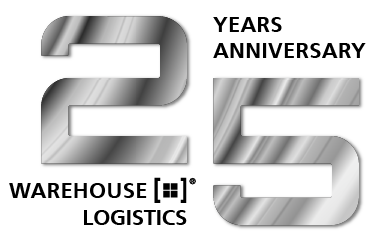The WMS Market
How can WMS providers be categorized?
With a versatile scope of services, the warehouse management system serves to optimise, control and monitor all warehouse and distribution systems. It thus belongs to the areas of "software and electrical automation" and at the same time to the intralogistics sector. The data presented here is an excerpt from the current WMS Market Report Compact 2022.
In Germany, Austria and Switzerland, about 100 providers of logistics IT systems can currently be identified that can be designated as warehouse management systems (WMS) according to VDI Guideline 3601. In order for an IT system to be designated as a WMS, the defining task and performance areas defined in VDI Guideline 3601 must be fulfilled.
Driven by technology and market trends, such as increasing digitalisation, rising automation or the use of methods in the field of artificial intelligence, WMS providers are also challenged to establish new approaches and adaptations for the market. As a result, new functional and technological development priorities are being established.
Market presence of the WMS providers
Almost three quarters of the WMS providers have been offering warehouse management systems for more than 20 years. Most providers even have more than 30 years of experience in the WMS area (44%) and have thus been present on the market since the beginning of the possibilities for digital warehouse management. The majority of WMS providers state that almost every second employee has been working in the company for more than 9 years, which also speaks for many years of experience.
Distribution of the WMS provider types
Depending on individual customer requirements, the respective strengths and functional orientations of the WMS providers contribute to the success of the project. A distinction is made between three types of providers:
It can be observed that the functional and product range of some providers is further diversifying through a horizontal and vertical expansion of the product portfolio. The classic and central warehouse software of the WMS providers is complemented in a modular way by supplementary software systems, such as Transport Management Systems (TMS), Resource Planning Systems (RPS) or Business Intelligence Systems (BI). In general, the provider types are subdivided according to the following criteria.
»Pure« WMS provider
The »pure« WMS provider primarily offers logistics IT for the warehouse. The scope of delivery can also be supplemented by warehouse-relevant software (e.g. Resource Planning Systems (RPS), Business Intelligence Systems (BI)). In addition, some WMS providers have a special industry focus. The core business, on the other hand, is aimed at the software-technical and functional support of complex processes in the warehouse. Through cooperating with ERP and warehouse technology providers, »pure« WMS providers can expand their product range.
Suite provider
For suite providers, the warehouse management system is part of a larger software suite (e.g. ERP/SCM system). This enables a higher level of integration into cross-company or cross-location modules and functions of the business suite, whereas the core business is mostly focused on manual or partially automated warehouses. Nevertheless, complex facilities characterised by a higher degree of automation are now also being connected. The WMS can be used autonomously.
Integrators
The integrator is originally at home in metal construction. In the course of the automation of the warehouses, more and more points of reference to electronics, in particular to the control electronics of e.g. storage and retrieval machines, became apparent. Warehouse management systems developed from this, so that the integrator now acts as a general contractor. This means that the warehouse management system usually has a high level of integration to control the material flow. The core business still comprises highly automated warehouses with complex processes, although due to the increased development of logistics IT competence there is now a tendency to spin off the software division and to offer the WMS without warehouse technology.
Duration of use of a WMS
The average duration of use of a WMS according to the WMS providers can be seen. 83% of the WMS providers state that the duration of use of WMS is at least 10 years. This goes hand in hand with the fact that the selection of a suitable WMS provider enables long-term partnerships.
Development budget
The percentage figure shown represents the effort of WMS providers to further develop their systems in relation to their annual turnover in the WMS area. Since 2020, all WMS providers have been investing at least 5% of their turnover in further development. In 2022, the capital expenditure of half of the WMS providers will amount to 11-20% of their turnover.
Employee growth
According to the estimates of the WMS providers, the number of employees will increase slightly to strongly or remain stable in the next few years. A decrease is not expected. Since 2013 until 2021, the number of employees has grown by 9% per year on average.
If you would like to find out how the WMS providers are meeting the current challenges, which other trends are determining the market and which success factors are significantly accompanying them, we recommend the WMS MARKET REPORT COMPACT 2024.
